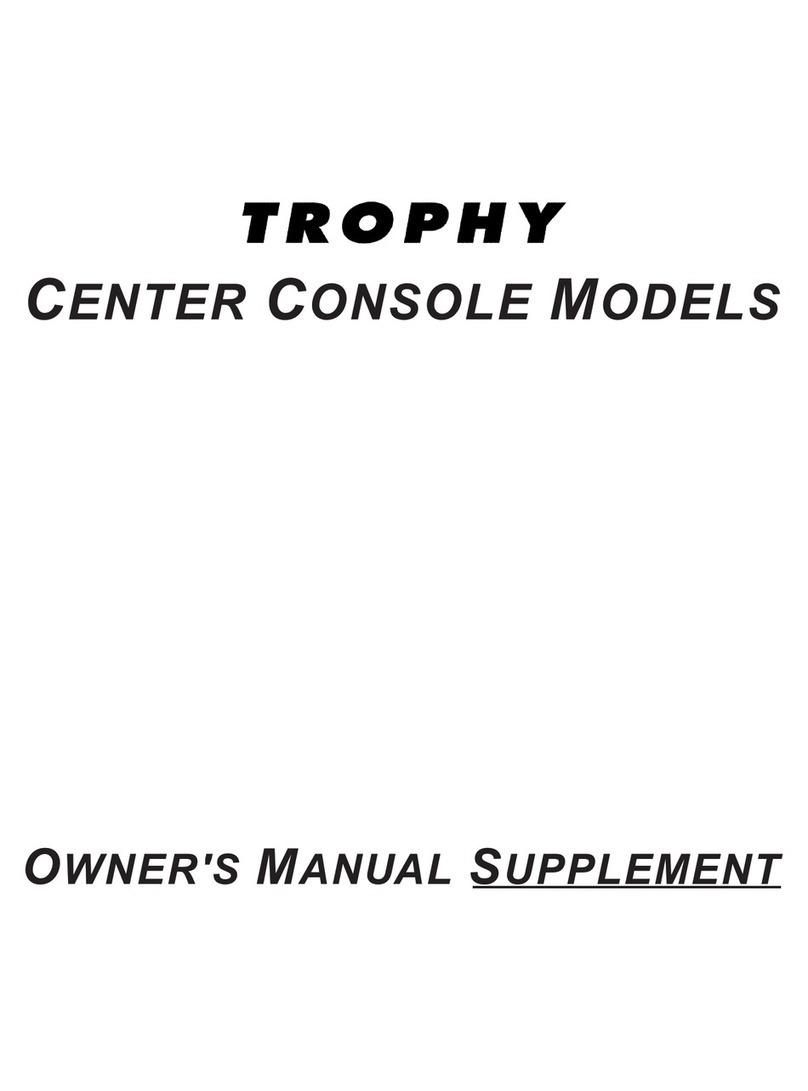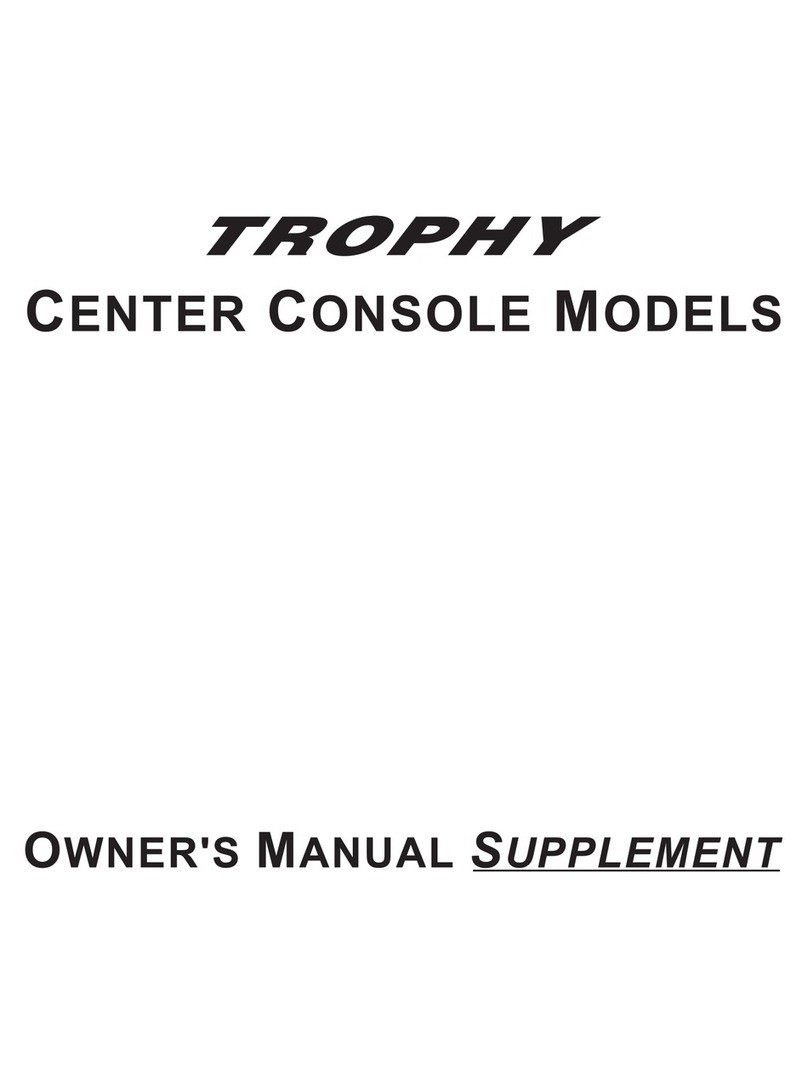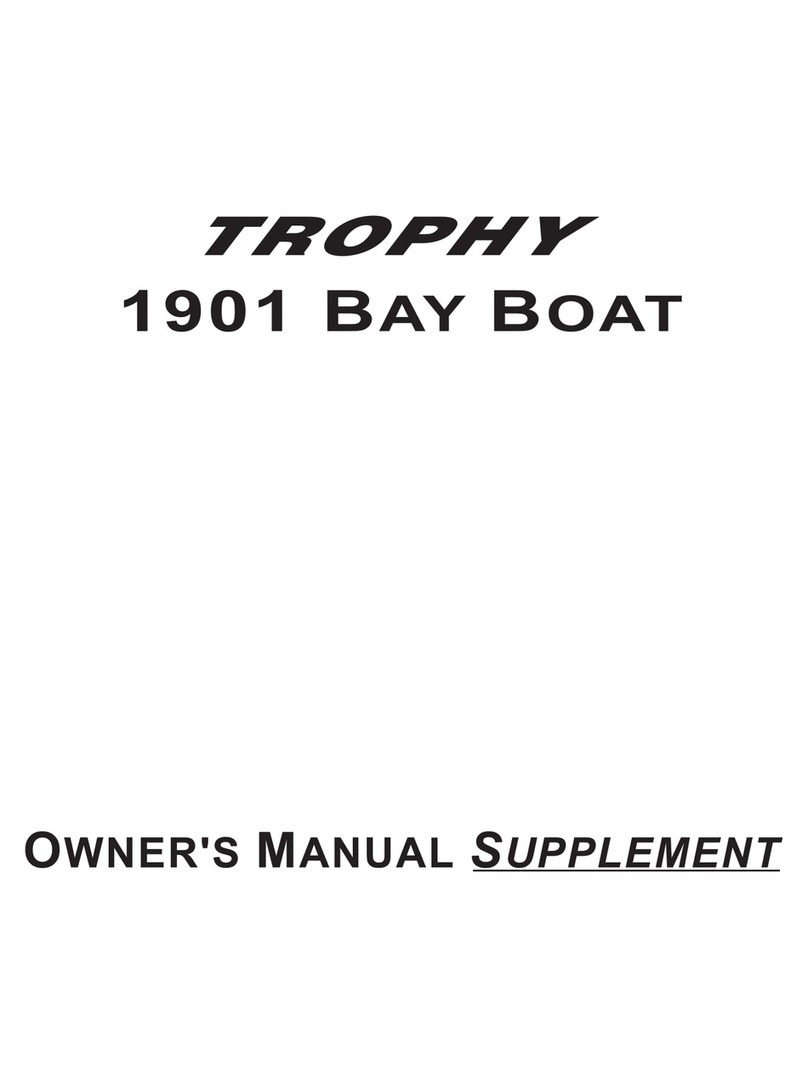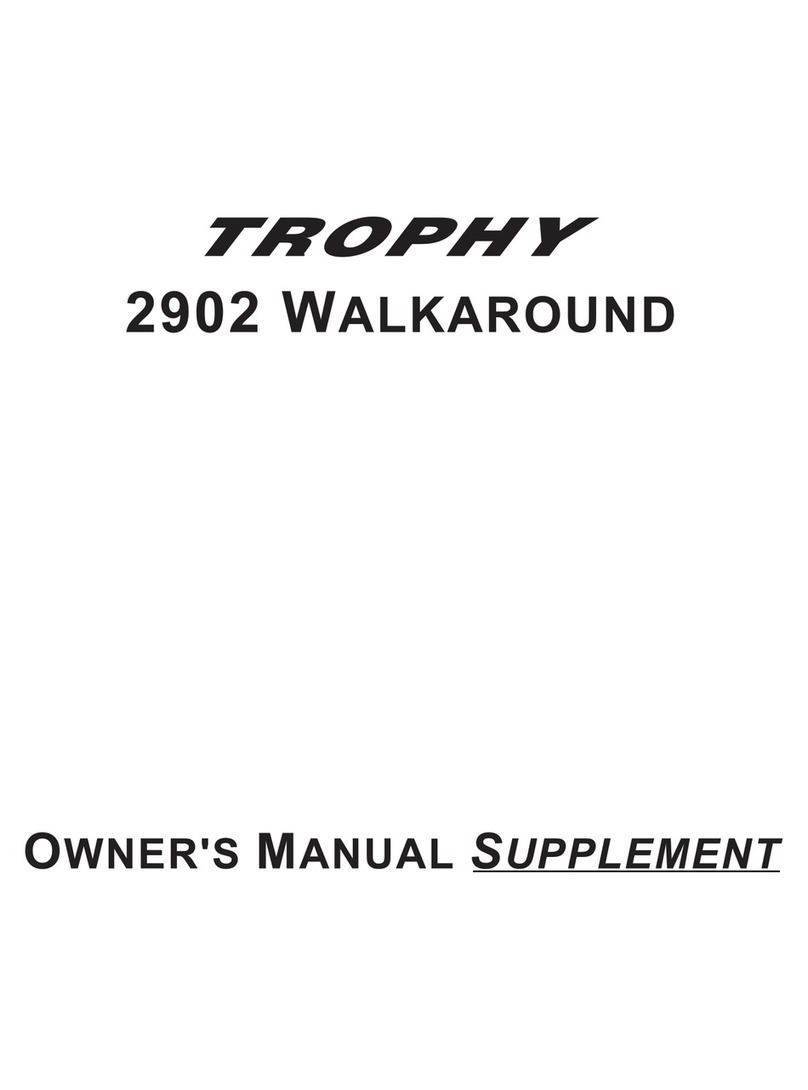
2
Chapter 1: Welcome Aboard! Walkaround Models •Owner’s Manual Supplement
Safety Standards
•Your boat’s mechanical and electrical systems were designed to meet safety standards in effect at the time it
was built.
•Some of these standards were mandated by law, all of them were designed to insure your safety, and the safety of
other people, vessels and property.
In addition to this Owner’s Manual Supplement,read the Sport Boat Owner’s Manual and all accessory instructions
for important safety standards and hazard information.
Engine & Accessories Guidelines
•Your boat’s engine and accessories were selected to provide optimum performance and service.
•Installing a different engine or other accessories may cause unwanted handling characteristics.
•Should you choose to install a different engine or to add accessories that will affect the boat’s running trim, have
an experienced marine technician perform a safety inspection and handling test before operating your boat again.
Certain modifications to your boat can result in cancellation of your warranty protection. Always check with
your dealer before making any modifications to your boat.
FALLING and ROTATING PROPELLER HAZARD!
NEVER allow anyone to ride on parts of the boat not designed for
such use.
•Sitting on seat backs, lounging on the forward deck, bow riding, gunwale riding or occupy-
ing the transom platform while underway is especially hazardous and will cause personal
injury or death.
DANGER!
!
ROTATING PROPELLER and CARBON MONOXIDE
POISONING HAZARD!
•NEVER allow anyone to occupy, or hang from, the
back deck or swim platform while the engine(s)
are running.
•Teak surfing, dragging, or water skiing within 20 feet
of a moving watercraft can be fatal.
DANGER!
!
PERSONAL SAFETY HAZARD!
ALWAYS secure the anchor and other loose objects before getting underway. The anchor and
other items that are not properly secured can come loose when the boat is moving and cause
personal injury or death.
DANGER!
!
When storing your boat please refer to your engine’s operation and maintenance manuals.
NOTICE


































